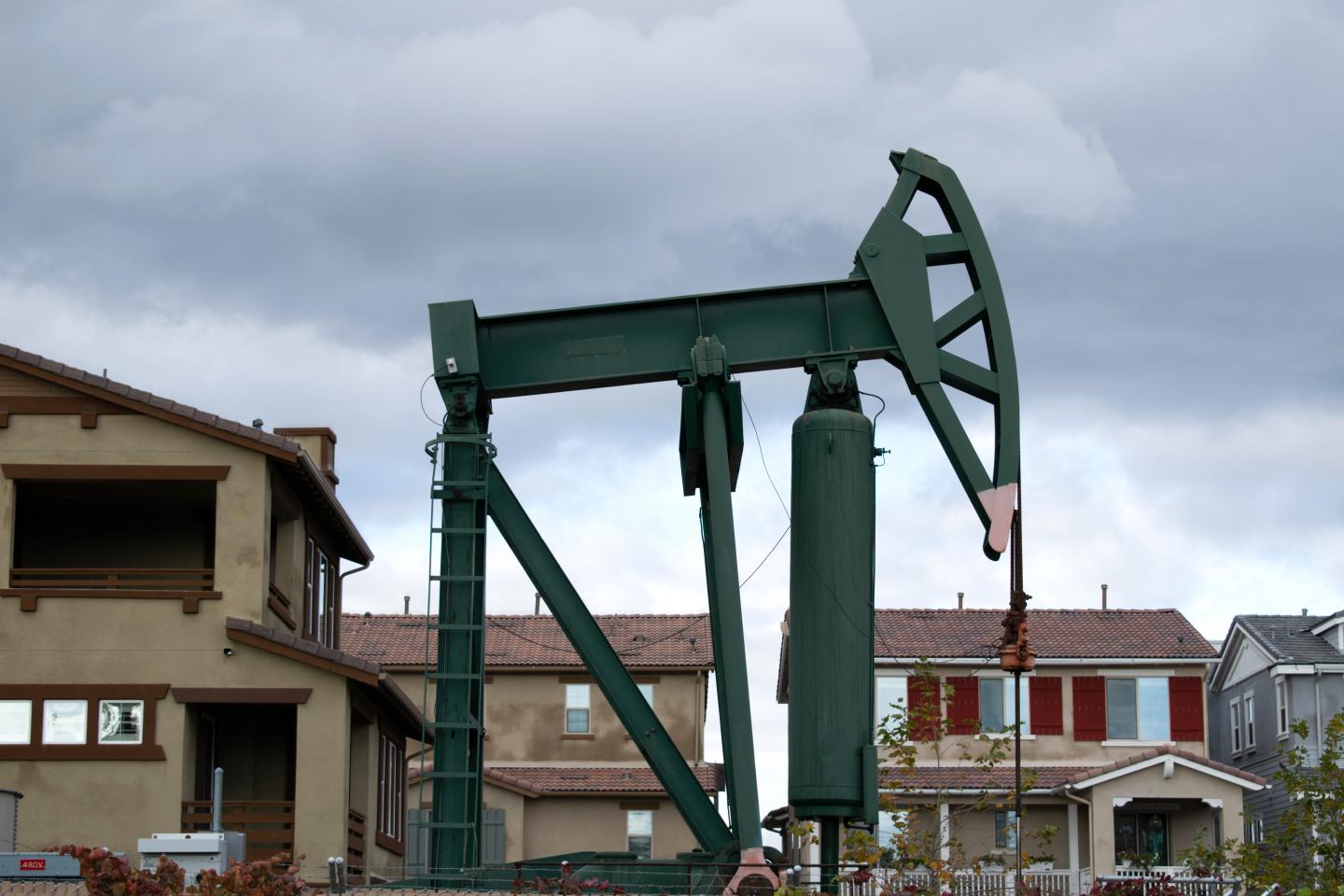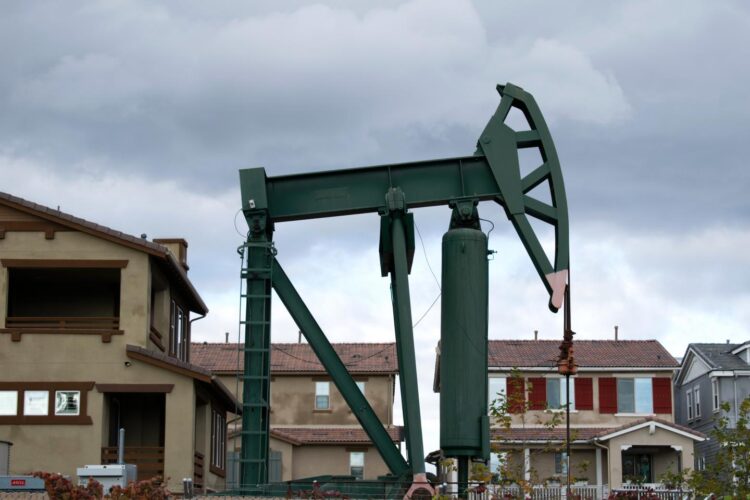
Credit: Photo credit: David Gonzalez
Living in close proximity to oil and gas operations may increase the risk of preterm birth, according to new research on births in California’s primary oil-producing region. The work could inform discussions about the state’s implementation of setbacks from oil and gas extraction facilities.
Researchers examined 225,000 births from mothers who lived within about six miles of oil and gas wells in the San Joaquin Valley from 1998 to 2011. The results show that women who lived near wells in the first and second trimesters were 8 to 14 percent more likely to experience a spontaneous preterm birth – one that would otherwise be unexplained – at 20 to 31 weeks. Spontaneous preterm birth, in which a pregnancy ends before 37 weeks of gestation, is the leading cause of infant death in the United States.
The study, published June 5 in Environmental Epidemiology, adds to a small body of population-based research aimed at better understanding how environmental factors may affect the health outcomes of pregnancy, and it is among the first to investigate a potential link between residential proximity to oil and gas operations and spontaneous preterm birth in California. About 17 million people in the United States live within one mile of an active oil or gas well, including 2.1 million in California.
“There’s some evidence that environmental exposures increase risk of preterm birth, but this particular exposure – oil and gas – has received very little attention in California, despite having millions of people living in close proximity to wells,” said lead author David Gonzalez, a PhD candidate in the Emmett Interdisciplinary Program in Environment and Resources (E-IPER) at Stanford University’s School of Earth, Energy & Environmental Sciences (Stanford Earth). “We’re getting a sense that this does potentially have an adverse effect on health outcomes of pregnancy.”
The analyses focused on how exposure to wells may affect spontaneous preterm births. Therefore, the researchers excluded multiple births and women who had medical conditions associated with early delivery, like maternal preeclampsia. Of about 225,000 birth outcomes analyzed over a 13-year period, 28,000 were spontaneous preterm births. The negative impact of living near a well appeared strongest among women who were Hispanic, Black or had fewer than 12 years of education.
“For me, the higher risk for the Hispanic and non-Hispanic Black women is an important signal and it makes me want to ask more questions,” Gonzalez said.
The new findings differ with those from another recent study from the University of California, Berkeley, which found that living near oil and gas operations throughout the state may increase the risk of low birth weight and small gestational age – but not preterm birth. The Stanford researchers note that one thing they did differently was to look only at cases of spontaneous preterm births, which the UC Berkeley group did not do.
“The causes of preterm birth, particularly those that occur spontaneously, remain a mystery. If you group all types of preterm births together, it makes it very hard to identify possible causes,” said senior author Gary Shaw, DrPH, a professor of pediatrics at the Stanford University School of Medicine. “We looked exclusively at spontaneous preterm with our best efforts to look at narrower slices of when babies were born.”
While previous studies on birth outcomes in Pennsylvania, Texas and Colorado have focused on unconventional natural gas extraction (commonly known as fracking), most wells in California are drilled using conventional methods. The researchers only analyzed wells that were active or in the preproduction stage – when the wells were being constructed – since those are expected to have the most emissions. The analyses included about 83,000 wells, 12,000 of which were in preproduction. They included mothers living within six miles of a well into their analyses of the highest risk of exposure.
“California is considering regulating how close to sensitive sites like schools these wells should be allowed to operate. I think this paper is strong evidence that we need to think carefully about that decision,” said co-author Marshall Burke, an associate professor in the Department of Earth System Science at Stanford Earth. “A key next step, I think, is finding out explicitly how close you need to be to a well for it to cause harm.”
The researchers also hope to further explore why living near a well could be associated with a spontaneous preterm birth. Residents near wells may be exposed to a range of environmental contaminants and stressors. For example, they could be breathing in chemicals used in extraction, experiencing stress from drilling noise, drinking contaminated water or breathing in higher levels of particulate matter in the air around such sites.
“We don’t understand what causes preterm birth, but we understand that certain factors increase your risk, and environmental exposures are among those factors,” Gonzalez said.
###
Shaw is also a member of Bio-X and the Maternal & Child Health Research Institute (MCHRI). Burke is also deputy director of the Center on Food Security and the Environment, senior fellow at the Freeman Spogli Institute for International Studies, a member of Bio-X, and a fellow with the Stanford Institute for Economic Policy Research (SIEPR). Co-authors on the study include Allison Sherris, an E-IPER PhD candidate; Wei Yang, a research engineer in the Department of Pediatrics; David Stevenson, MD, The Harold K. Faber Professor of Pediatrics; Michael Baiocchi, an assistant professor of epidemiology and population health; and Mark Cullen, MD, professor of medicine, of biomedical data science, of health research and policy, and senior fellow with SIEPR. Amy Padula from the University of California, San Francisco was also a co-author on the study.
The research was supported by the National Institutes of Health (NIH) and the March of Dimes Prematurity Research Center at Stanford University.
Media Contact
Danielle T. Tucker
[email protected]
Original Source
https:/
Related Journal Article
http://dx.





